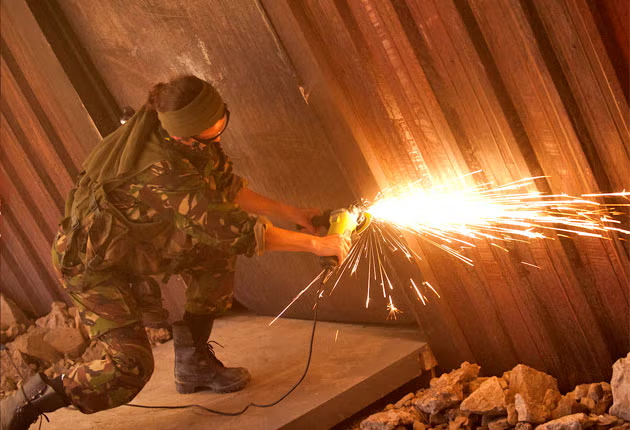The Crash of the Elysium, Manchester International Festival: MediaCity, Salford

Your support helps us to tell the story
From reproductive rights to climate change to Big Tech, The Independent is on the ground when the story is developing. Whether it's investigating the financials of Elon Musk's pro-Trump PAC or producing our latest documentary, 'The A Word', which shines a light on the American women fighting for reproductive rights, we know how important it is to parse out the facts from the messaging.
At such a critical moment in US history, we need reporters on the ground. Your donation allows us to keep sending journalists to speak to both sides of the story.
The Independent is trusted by Americans across the entire political spectrum. And unlike many other quality news outlets, we choose not to lock Americans out of our reporting and analysis with paywalls. We believe quality journalism should be available to everyone, paid for by those who can afford it.
Your support makes all the difference.It looked quite interesting, my 11-year-old said afterwards, but pretty much the kind of thing your parents usually take you to. Not for long.
We were in an exhibition at the Manchester International Festival displaying old photographs of Victorian dockyards. A dry old curator was talking about a ship called The Elysium which had sunk in 1888. Suddenly two soldiers in full combat gear burst in and declared there was a national emergency.
They needed assistance, but only children under 12 could help. "When I open this door follow me, and run – and I don't mean jog, I mean sprint," said the platoon leader. As it was a family performance we were permitted to tag along, constantly upbraided for not keeping up.
In the first room we had to don decontamination suits and then found ourselves in a large, low, smoke-filled hangar. We could just make out the side of a crashed space-ship, The Elysium, lights flashing, emitting low rumbling noises. For the next hour we dashed through various chambers, keeping low, staying vigilant, pushing through dangling cables in the darkness. The children uncovered a black box. It contained the first of a series of filmed messages. The audience gasped when they saw it was Doctor Who (Matt Smith on film).
On we went, uncovering control rooms, deciphering clues, finding more messages and being chased by the scariest of Doctor Who's adversaries. Courtesy of Punchdrunk theatre company, in association with the BBC (which has six separate casts taking groups of just 20 at a time), we travelled back in time. We found a sprite's chamber, a living skeleton room, and more, until, by harnessing some arcane energy, we were able to send the Tardis back to the Doctor.
At the back, a kindlier lady soldier, Lt Ripley, comforted those members of the audience who burst into tears when things got too scary. Children manage better, apparently, when their parents are not there, though perhaps the combination of immersive spills and scares is too much for those under eight.
Those who survived, however, plundered their lexicon of superlatives to convey their sheer thrilling excitement at the end: awesome, wicked, fantastico, the best thing ever, epic, ten out of ten. A mere adult can only concur.
To 17 July (mif.co.uk)
Join our commenting forum
Join thought-provoking conversations, follow other Independent readers and see their replies
Comments